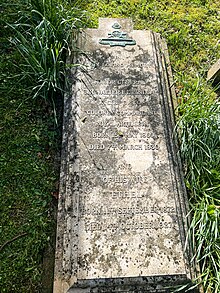Walter Lindsay
Sir Walter Lindsay Knight Commander of the Order of the Bath Distinguished Service Order |
|---|
First World War
.
Military career
Lindsay was born into a Scottish family in
8th Hussars, and his wife, Jane. He was educated in Scotland before continuing to the Royal Military Academy, Woolwich.[1]
He followed his father into the Army, joining the
First World War, he was appointed as the chief artillery officer of the British Expeditionary Force, with the rank of Major-General.[2]
He served on the Western Front for the first months of the war; however, there were few centralised artillery forces commanded by corps or GHQ at this stage, and as a result Lindsay was sidelined and rarely involved in field operations. He was replaced by John Philip Du Cane in January 1915, returning home with a knighthood and appointed as the Inspector of Royal Horse Artillery and Royal Field Artillery. He was later briefly commander of the 50th (Northumbrian) Division before retiring from the army in 1917.[3]
He died in London after a long illness.[1]
References
- ^ a b "Obituary: Major-General Sir Walter Lindsay". The Times. 10 March 1930. p. 19.
- ^ "LINDSAY, Maj.-Gen. Sir Walter (Fullarton Lodovic)", in Who Was Who (2007). Online edition
- ISBN 978-1409411109.

